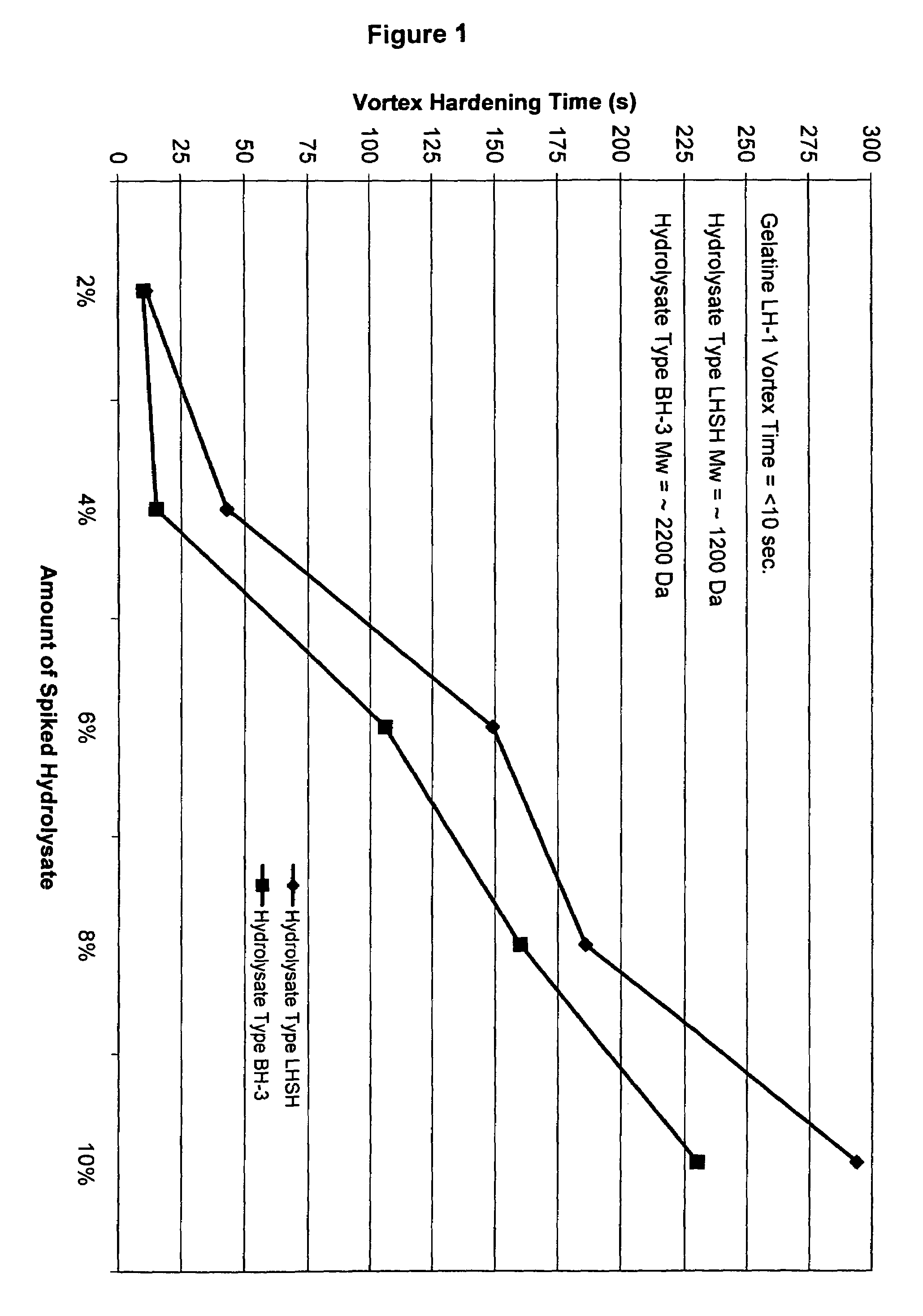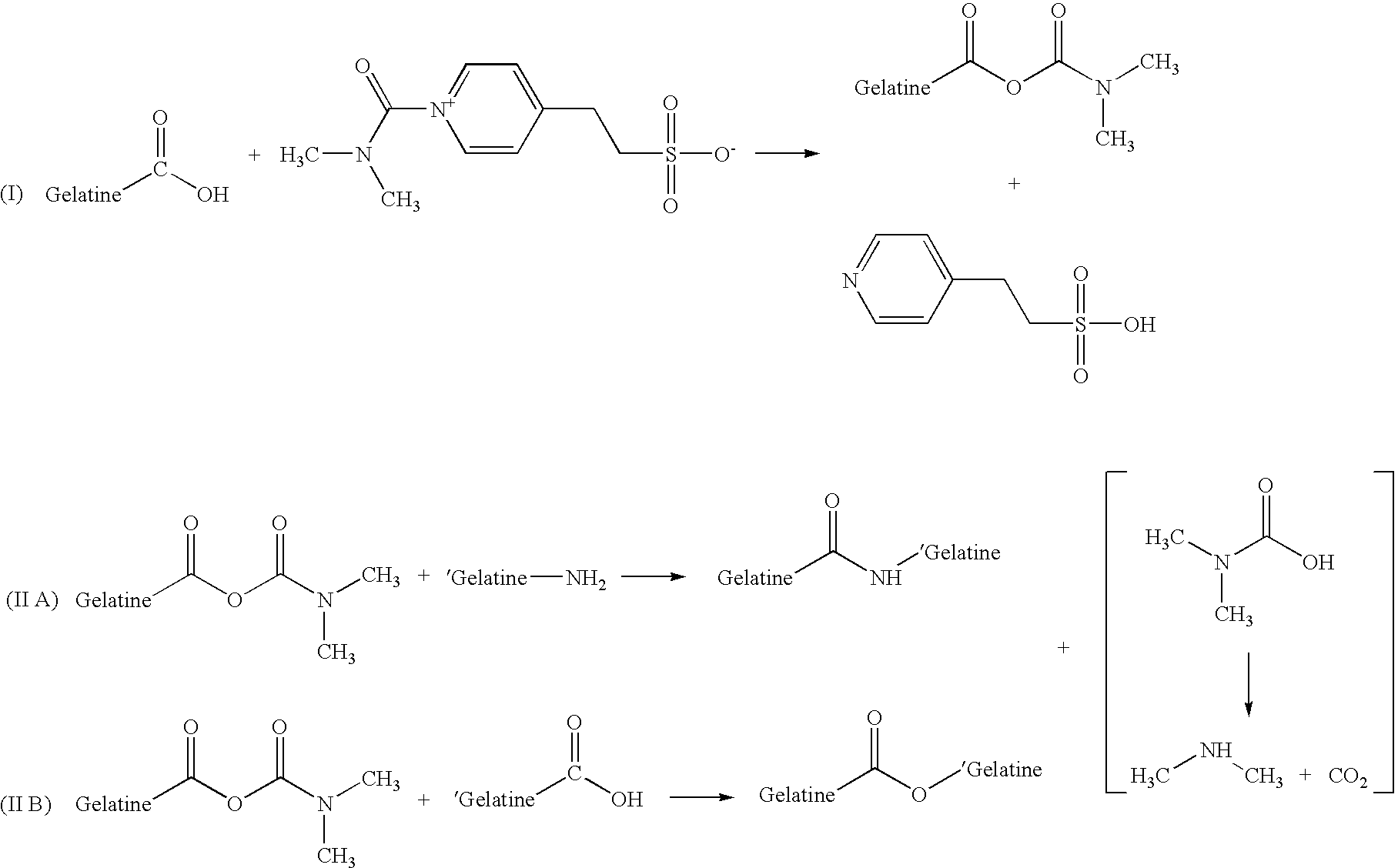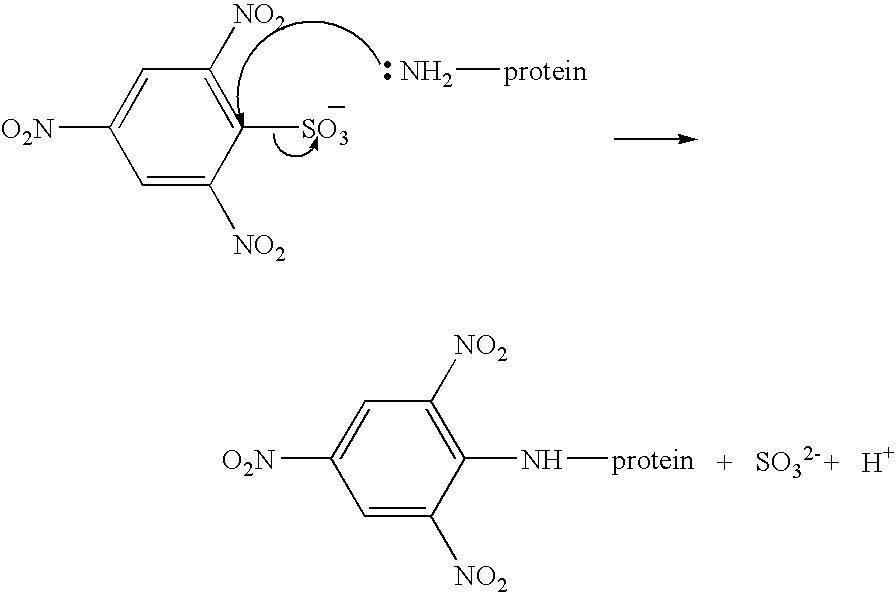Process for making a low molecular weight gelatine hydrolysate and gelatine hydrolysate compositions
a gelatine hydrolysate and low molecular weight technology, applied in the field of gelatine hydrolysate, can solve the problems of pellicle formation, cross-linking, and retardation of disintegration of gelatine capsules, and achieve the effects of reducing cross-linking in gelatine, improving cross-linking and dissolution properties, and cost-effectiveness
- Summary
- Abstract
- Description
- Claims
- Application Information
AI Technical Summary
Benefits of technology
Problems solved by technology
Method used
Image
Examples
example 1
[0081]The gelatine hydrolysate of the invention may be made according to the following process. A solution containing 34% gelatine was made by adding 1.94 kg of water to 1.0 kg of de-ionized processed gelatine. The gelatine was left to hydrate for 1 hour and then placed into a 55° C. water bath to dissolve. Once completely dissolved, the pH of the gelatine solution was adjusted to 6.0-6.5 with aqueous sodium hydroxide. Calcium Chloride was added to the gelatine solution in the amount of 0.037% w / w with the amount of gelatine in solution (CDG—Commercial Dry Gelatine, all additions in this procedure were based on this amount). An aliquot was taken and was diluted to 5% in order to test the Redox State of the solution. Peroxide testing strips (EM Science) were used to quickly measure the amount of peroxide. If peroxide was present, Fermcolase® 1000F (Genencor International Inc.) was added in 0.5 mL increments. After each addition, the solution was left to react for 30 minutes before re...
example 2
[0084]The following procedure was used to quantify the degree of reduction in cross-linking for various gelatine compositions. In the control experiments, 10.0±0.1 g of gelatine was added to a 250 mL beaker, to which was added 90.0±0.5 g of de-ionized water. A watch glass was placed on the beaker and the gelatine was allowed to swell for 30-60 minutes. The swelled gelatine was placed into a 60±0.1° C. water bath for 15-30 minutes or until all of the gelatine was dissolved. A magnetic stir bar was placed into the gelatine solution and the pH was adjusted upon a stir plate with dilute NaOH and H2SO4 to a pH of 7.00±0.05 after which the magnetic stir bar was removed. The solution was placed into a water 40±0.1° C. water bath for 15-60 minutes to cool. A digital stirring motor (Heidolph Brinkman 2102) equipped with a 4-blade mixer was used to create vortex at 750±10 RPM. Immediately, 20±0.5 mL of a pH 7 phosphate buffered 10% formalin solution (Fisher Scientific) was added. The vortex h...
example 3
[0094]The gelatine hardening agent OB1207® [2-(4-Dimethylcarbamoyl-pyridino)-ethane-1-sulfonate] was acquired from H.W. Sands Corporation. OB1207® has been touted as a replacement for formaldehyde in photographic emulsions. Reaction 1 describes the cross-linking of OB1207® with gelatine. The formation of amide and ester bonds between gelatine chains through the reaction with OB1207® may closely mimic the type of cross-linking seen in gelatine samples that have been aged and / or stressed due to exposure to extremes of heat and humidity.
[0095]
Reaction 1
[0096]In control experiments, 15.0±0.1 g of gelatine was added into a 250 mL flask. To this, 95.0±0.5 g of de-ionized water and a magnetic stir bar was added. The gelatine was covered with parafilm allowed to swell for 30-60 minutes. The flask was placed into a 60±1.0° C. water bath for 15-20 minutes or until all of the gelatine was dissolved. The viscosity of this solution was measured using a Brookfield DV-III+Rheometer at 50 RPM and 6...
PUM
 Login to View More
Login to View More Abstract
Description
Claims
Application Information
 Login to View More
Login to View More - R&D
- Intellectual Property
- Life Sciences
- Materials
- Tech Scout
- Unparalleled Data Quality
- Higher Quality Content
- 60% Fewer Hallucinations
Browse by: Latest US Patents, China's latest patents, Technical Efficacy Thesaurus, Application Domain, Technology Topic, Popular Technical Reports.
© 2025 PatSnap. All rights reserved.Legal|Privacy policy|Modern Slavery Act Transparency Statement|Sitemap|About US| Contact US: help@patsnap.com



